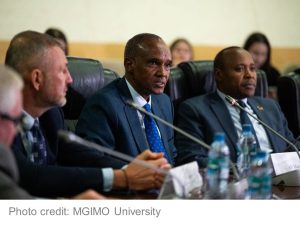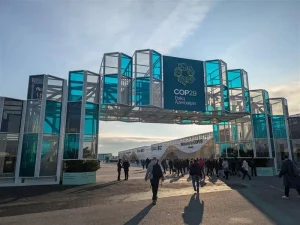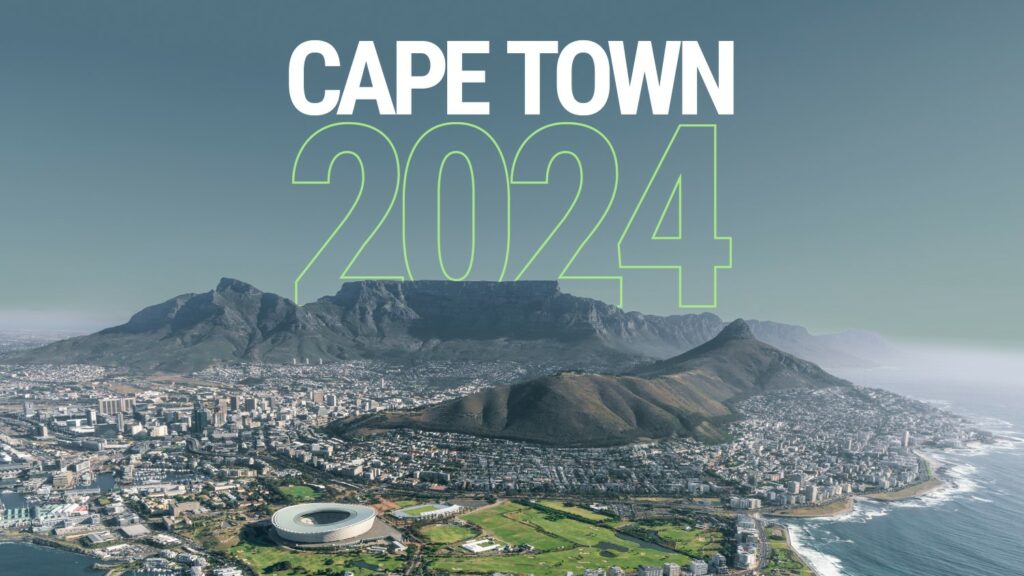
The signing of a memorandum of understanding on low-carbon development between Russia and Ethiopia at COP29 in Baku underscores the strong climate cooperation among BRICS countries. The memorandum, signed by the Russian Deputy Minister of Economic Development, Vladimir Ilyichev, and the Ethiopian Deputy Minister of Planning and Development, Seyoum Mekonnen, signifies a new milestone in the BRICS nations’ joint commitment to sustainable growth and climate action.
This collaboration represents a substantial advancement for both Russia and Ethiopia and reinforces the entire BRICS climate agenda. Sergey Tverdokhleb, Deputy Chairman of the Russian Union of Industrialists and Entrepreneurs (RSPP) Committee on Climate Policy and Carbon Regulation witnessed the signing. The memorandum aligns with BRICS’ ongoing efforts to address urgent international environmental challenges and to advocate for developing countries in climate negotiations.
A Strategic Extension of BRICS’ Climate Cooperation
Ethiopia’s recent entry into BRICS—a coalition of Brazil, Russia, India, China, and South Africa—positions the country to play a significant role in the group’s climate and environmental initiatives. BRICS has long championed low-carbon development through mechanisms like the New Development Bank, which funds green infrastructure, and the BASIC Group, established in 2009 to amplify developing nations’ voices in climate discussions.
The memorandum highlights cooperation in key areas essential for achieving the Paris Agreement goals, including greenhouse gas reductions, sustainable financing, and carbon trading. It establishes a working group on climate change and low-carbon development, fostering shared best practices and joint research on carbon regulation and markets, thus solidifying climate collaboration between Ethiopia, Russia, and other BRICS members.
Unlocking Climate Potential Through Joint Efforts
BRICS countries, with Ethiopia now among them, hold considerable potential for climate projects. According to Andrey Melnichenko, Chairman of the RSPP Committee on Climate Policy and Carbon Regulation, the potential of climate projects in natural ecosystems and geoengineering projects could reach up to 150 Gt CO₂-equivalent annually, far exceeding all anthropogenic emissions. The BRICS alliance, which Ethiopia officially joined at the beginning of 2024, accounts for over a third of this potential.
Ethiopia’s Role in BRICS’ Vision for a Sustainable Future
Ethiopia’s commitment to the new Memorandum marks a critical step in advancing the BRICS’s low-carbon development goals. This partnership promotes the growth of carbon markets among BRICS nations, enabling a shared platform for carbon trading. Vladimir Ilyichev emphasized that the working group, expected to form within six months of the memorandum signing, will deepen Russian-Ethiopian cooperation and strengthen ties among all BRICS countries on climate-focused initiatives.
Enhancing Regional and Global Impact
This memorandum not only fortifies bilateral relations between Russia and Ethiopia but also strengthens BRICS’ broader commitment to sustainable development. From initiatives like the China-Brazil Earth Resources Satellite Program to recent green investments under the Belt and Road Initiative, BRICS has consistently demonstrated its balanced approach to economic and environmental responsibility.
Sergey Tverdokhleb commented, “Russian businesses view international climate cooperation, including climate project interaction with Ethiopia and other BRICS countries, as an important means to achieve both corporate and national climate goals. We hope the signed document and the planned working group will form a solid foundation for partnership development.”
As BRICS countries continue to work together through agreements like this, they exemplify global solidarity in addressing climate change. The signing of this memorandum at COP29 marks a critical milestone in the international pursuit of low-carbon development, with progress expected in sustainable growth and closer interlinks among BRICS members. This partnership symbolizes a much-needed hope for a climate-resilient future, not only for Africa but also for the broader BRICS community.









